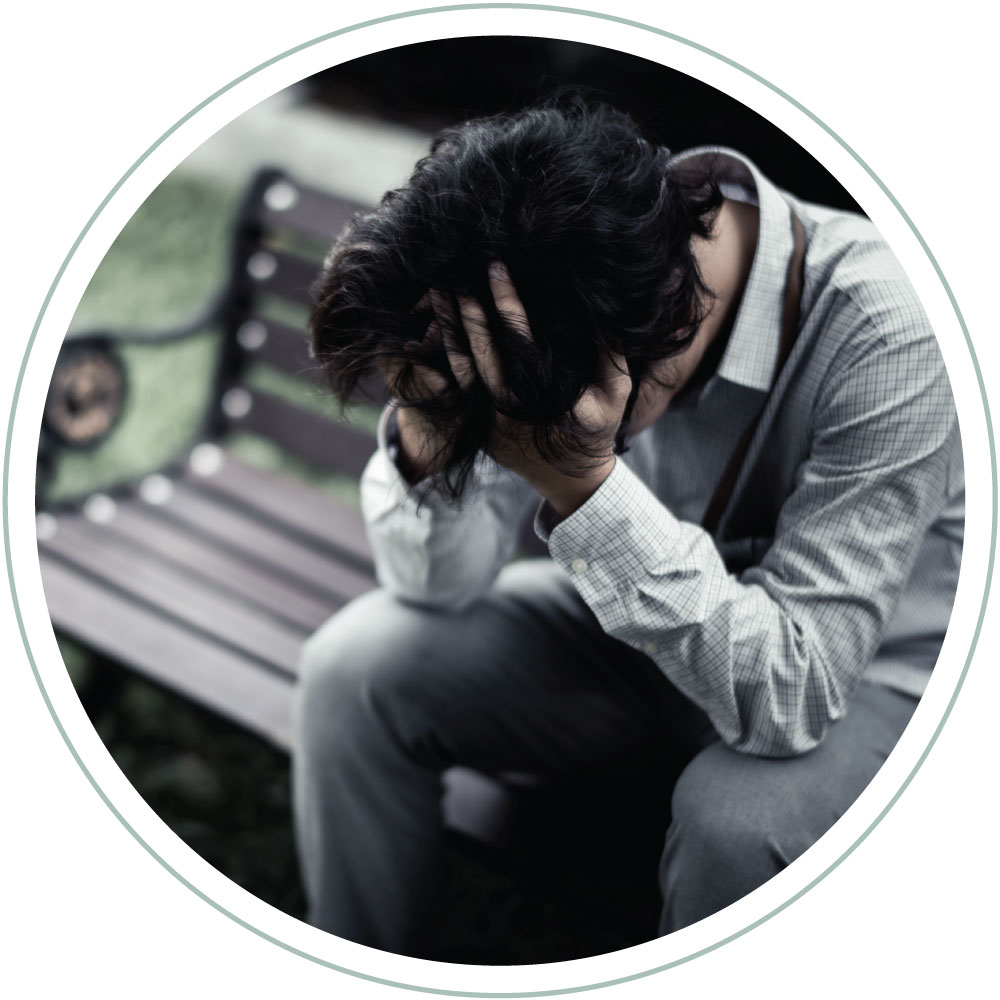Anxiety Disorders


MY SPECIALTIESAnxiety Disorders
Anxiety can even help alert us to dangers and even help us to prepare or pay attention to our surroundings or the situation. However, the state of “being afraid” is typically what amounts to an anxiety disorder as defined by the Diagnostic and Statistical Manual of Mental Disorders (DSM-5-TR) [1]. In other words, anxiety disorders help distinguish between the normal human reaction that is known as fear and the excessive amount of fear or anxiety that becomes an actual state of mind, which the person feels and can result in debilitating symptoms that cause problems for a person in one or more areas of their life that are important to them.
Anxiety disorders can be frightening, in their own right, especially when you don’t know where to turn or who to talk to about the fear that you are experiencing and how it all started. Many in the medical and mental health professions believe that medication is the only answer or that if therapy is involved, it should be chosen from a few select choices based upon the specific diagnosis, which is why people who experience anxiety disorders feel so misunderstood. After all, the fear or anxiety must be “disproportionate to the situation or age inappropriate and hinder the person’s ability to function normally” in order to “qualify” as a disorder. The definition already suggests that many in the helping professions perceive that there is something “wrong” with the person who is seeking help, rather than seeing the person, as a person, who is suffering and in need of compassionate care and understanding.

Anxiety Disorders are the Most Common Mental Illness in the United States [2]
Fear can take on many forms and your personal situation and needs are unique and specific, so while there are diagnoses that you may have been assigned, your experience is different even if there is a collection of symptoms or perhaps even a similar history that you share with others. The most important thing to remember is that the good news is that there is hope and help is available that is not limited to medication. I have experience working with all types of fear and anxiety, including those that are not specifically mentioned in the DSM-5-TR [3] and it’s my experience that unconscious anger from a previous life event(s), sometimes as a result of abuse or other trauma, is a common precursor to anxiety disorders.
The main categories of anxiety disorders that are specifically mentioned in the DSM-5-TR (excluding substance/medication-induced) include:
Generalized Anxiety Disorder
General excessive fear and worry about a number of life events or activities (such as work or school performance) lasting at least 6 months.
Panic Disorder
Recurrent unexpected panic attacks. A panic attack [4] is an abrupt surge of intense fear or discomfort that reaches a peak within minutes and includes specific symptoms that may also include culturally specific symptoms, which do not count towards the minimum four symptoms required. At least one panic attack has been followed by 1 month (or more) of one or both: persistent concern or worry about additional panic attacks or their consequences or a significant maladaptive change in behavior related to the attacks. Note: A Panic Attack Specifier can be added to other mental disorders if it does not meet the full diagnostic criteria.
Phobias, Specific Phobia
Specific fear or anxiety about a specific object or situation and typically lasts 6 months or longer. Fear or anxiety is often expressed differently in children.
Agoraphobia
Fear of two (or more) of specific situations that require the person to be in open or enclosed spaces outside of his or her home alone, with the fear, anxiety, or avoidance is persistent, typically lasting at least 6 months.
Social Anxiety Disorder (previously called social phobia)
Marked fear or anxiety about one or more social situations in which the individual is exposed to possible scrutiny by others, typically lasts 6 months or longer.
Separation Anxiety Disorder
Developmentally inappropriate and excessive fear or anxiety concerning separation from those whom the individual is attached, lasting at least 4 weeks in children and adolescents and typically 6 months or more in adults.
Note: The American Psychiatric Association, which publishes the DSM-5-TR states that related conditions include Post-Traumatic Stress Disorder (PTSD), Adjustment Disorder, Obsessive-Compulsive Disorder, Acute Stress Disorder, and Selective Mutism.


Psychotherapy for Anxiety Disorders
If you are committed to the therapeutic process and you are willing to acknowledge how anxiety is having an effect on your ability to function to your full capacity in areas of your life that are important to you, psychotherapy from a therapist with my background and training can be very effective. While some people who experience anxiety disorders have a general idea about when they started to feel anxious or afraid, many people do not understand the complex unconscious psychological conflicts that started their anxiety and even why they may cling to it as a form of self-protection.
Psychotherapy techniques can help you to understand the origins and put new language and meaning to things that you were not able to do on your own, so that you can find begin to believe that you do not have to continue to be afraid. In addition to teaching you how to manage your anxiety, we can work towards resolving you’re the underlying cause of your anxiety so that you can become free of the symptoms and experience real healing. My approach to treatment is unique and specific based on your individualized needs and goals. Short-term and longer-term treatment options are available, and we can discuss the evidence for each method that I have to offer you during your initial consultation as part of my initial assessment.
NOTES
[1] Anxiety is defined by the American Psychiatric Association as a “normal reaction to stress”. However, this demonstrates, at minimum, a lack of understanding about the cause of anxiety, the psychology of stress, and the role of trauma.
[2] American Psychiatric Association (2023). What are Anxiety Disorders? – Physician Review Philip R. Muskin, M.D., M.A. June 2021. Retrieved on January 15, 2023, from https://www.psychiatry.org/patients-families/anxiety-disorders/what-are-anxiety-disorders
[3] Castration anxiety is a psychoanalytic term, which Sigmund Freud described as a general fear about injury to your own body. Technically speaking, the loss of any body part can provoke the feeling of castration anxiety. Jacques Lacan, however, understood that Sigmund Freud’s sexual descriptions were just a screen covering up an even deeper anxiety. Castration, for Lacan, meant the horrifying recognition of our human fragmentation, the very fragmentation that the infant has to “cover up” through its identifications with the world as it builds up a coherent personality. Richmond, R. (1997-2022) Identity – and Loneliness: Encounter – and Trauma. A Guide to Psychology and its Practice. Retrieved on January 15, 2023, from https://www.guidetopsychology.com/identity.htm#2. Copyright © 1997-2022 Raymond Lloyd Richmond, Ph.D. Reproduced and adapted with permission by Raymond Lloyd Richmond, Ph.D. The material is copyrighted and may not be reproduced by any means.
[4] Panic attacks and anxiety attacks are commonly confused, and the terms are used interchangeably. The key difference between the two is that a panic attack begins abruptly without the person typically being consciously aware of ‘why’ they are having the attack. A person, who experiences anxiety attacks, is typically consciously aware of what causes the attack and so, it’s not something that begins abruptly, which implies without warning or an identifiable cause. This is an important distinction that most clinicians and even physicians fail to inquire about when screening their clients or patients prior to making a diagnosis. What difference does it make? Well, because it comes down to how we treat these different disorders. Anxiety attacks are much more manageable because they are within the person’s conscious awareness, although the person may have anxiety attacks much longer because of other unconscious desires that a child part or ego state may resist life, out of fear. Panic attacks are more mysterious; however, they may stop just as abruptly as they started, never to happen again. The original unconscious cause of the panic attacks may show up in treatment, or it may not reveal itself until years later when you are open to it.


